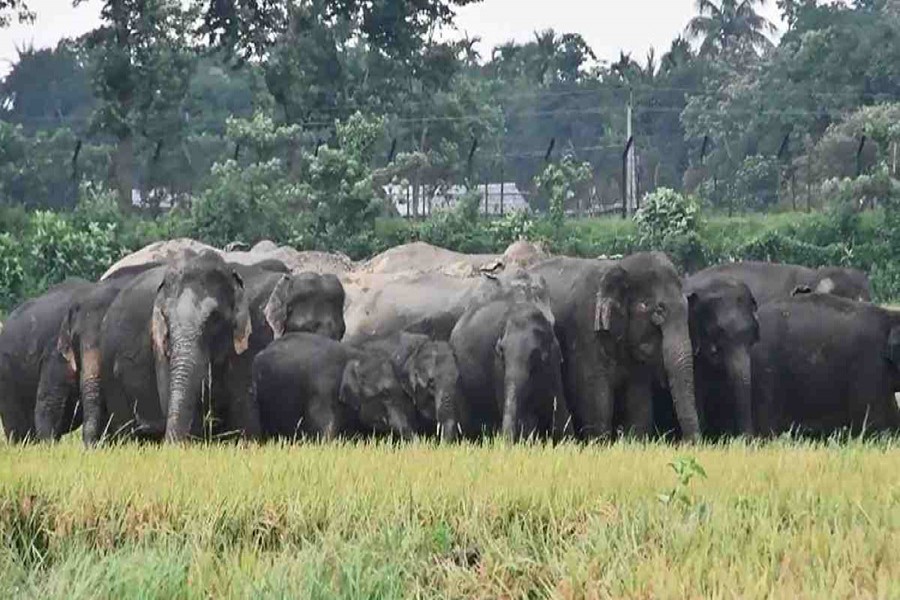The killing of wild elephants in a vast area of the Cox's Bazar district has started unfolding as alarming news. In the last 15 days, the carcasses of eight elephants have been discovered in different parts of the greater Cox's Bazar. According to the Forest Department information, a total of 26 elephants have been killed in the district over the last five years. Earlier, the spree of elephant killings plagued the bordering district of Sherpur and Chattogram division. At different spots in Cox's Bazar, the hungry and aggressive pachyderms are being shot dead brutally, or killed by electrocution. Thanks to the unabated forest encroachments, the earlier free-travelling elephants are losing their age-old passages or corridors. Shorn of these safe grazing areas, the elephant herds tear through the local villages and croplands. On being nearly deranged due to prolonged starvation, the giant beasts land on the habitats causing great losses to vast areas. Locals say it is a last-ditch effort to save their household properties and crop fields, which prompts them to scare the elephants away.
Animal rights activists do not subscribe to the idea of killing the elephants as a pragmatic way of checking the bewildered, angry elephants. Instead, they blame the forest encroaching syndicates for the whole trouble. Notwithstanding the small size of Bangladesh, it was once rich with varied species of wildlife. Besides, the land had long been an ideal habitat for a number of rare animal species. Those included Himalayan wildlife in particular, such as various types of tigers, rhinos, bears, pythons, and, of course, elephants, deer, monkeys etc. Due to human encroachment on their natural sanctuaries, which precipitated their shifting to safe zones across the border --- and isolated poaching activities and many natural reasons, a lot of the rare species have been declared extinct. Thanks to their dense populations in the country's Sylhet and Chattogram regions, a lot of elephants stayed back. In the olden days, wild elephants were trapped, and taken to their mansions by the rich. After domesticating the elephants, they would flaunt them as symbols of prestige. The colonial British rulers used these huge beasts in their tiger hunting expeditions. Elephants were also used as beasts of burden.
In 2021, the Cox's Bazar incidents of killing elephants cannot be taken lightly. With these killings emerging as rampant, this wildlife species could soon be declared by the International Union for Conservation of Nature (IUCN) as endangered. Over a hundred small and big animal species have already gone extinct in the country since the 20th century. The pace of extinction is only getting faster. Of the 26 Asian sub-species of elephants living in the greater Chattogram, almost half are feared to belong to the vulnerable group.
The elephants' aggressive attitude towards humans in Cox's Bazar is not irreversible. With strong interventions from the government's Forest Department, ensuring that the normally peaceful and seclusion-loving animals have wide areas to roam about and search for their food, the present humans-elephants face-off can be dealt with efficiently. First of all, the forestland grabbers ought to be nabbed. At the same time, the practice of building dwellings, recreation complexes, rest houses etc in the long-used elephant corridors has to be resisted by enforcing wildlife protection rules. Moreover, the laws against forest encroachment ought to be made more stringent. Unlike in the Sub-Saharan African countries, Bangladesh is still free of the organised poachers who kill elephants to smuggle out their tusks used for making ivory ornaments abroad. But the elephants' fast disappearance, nonetheless, continues to exacerbate its biodiversity loss.


